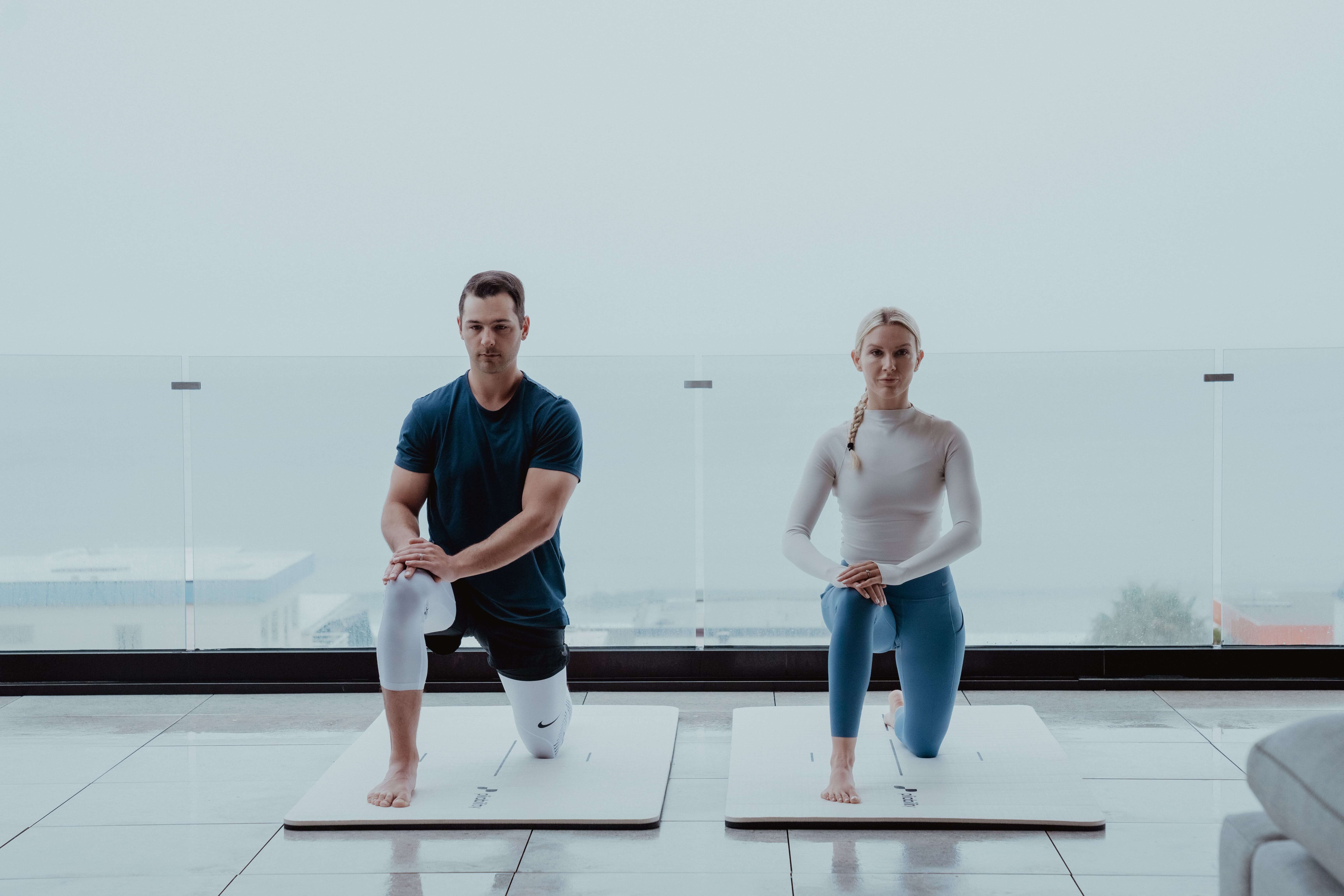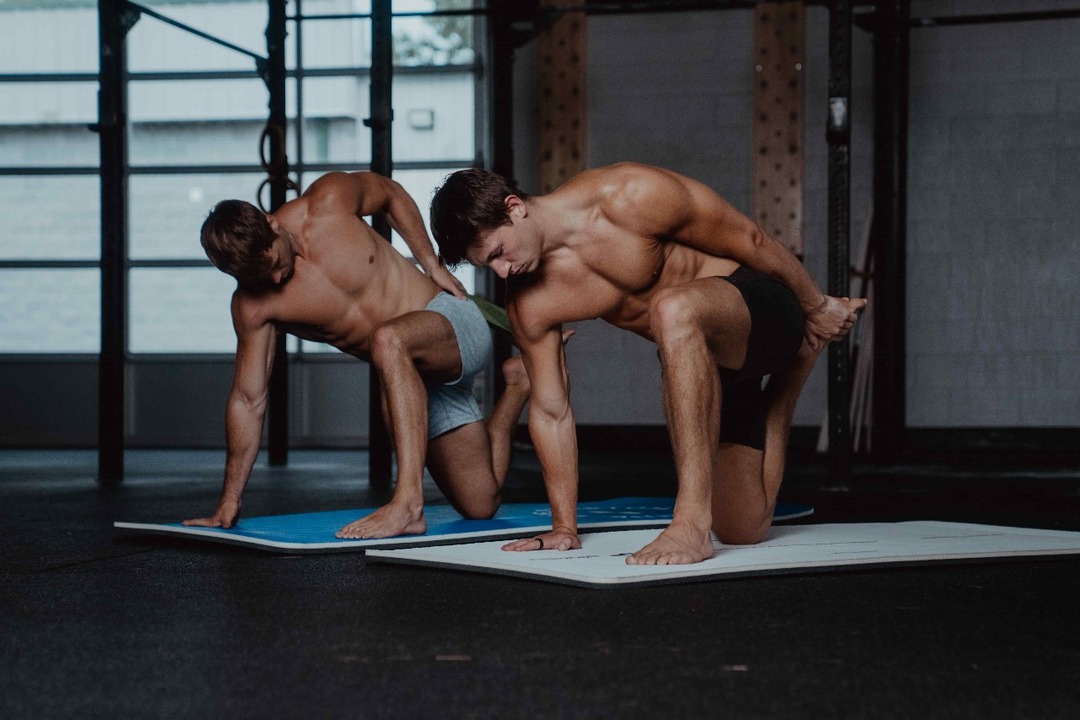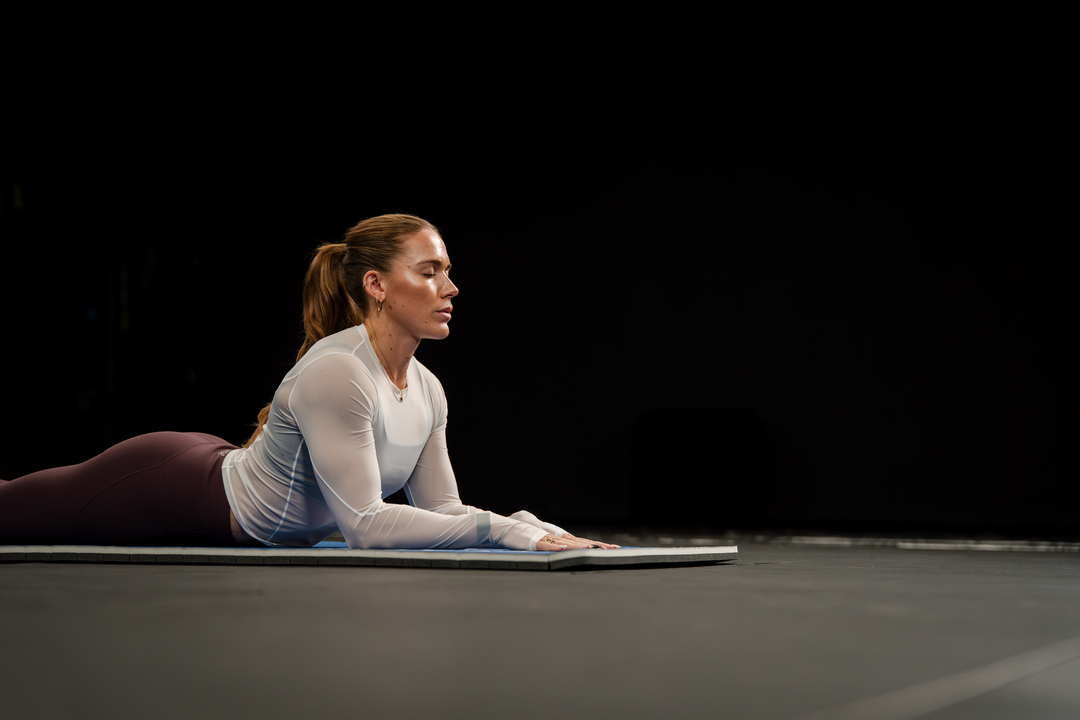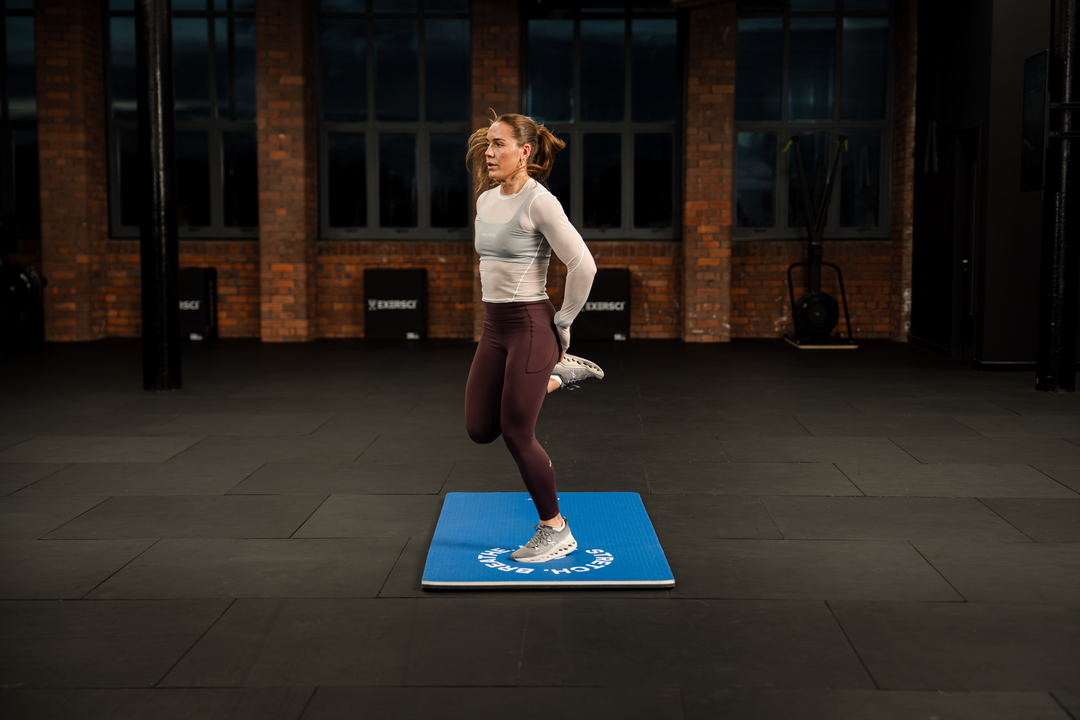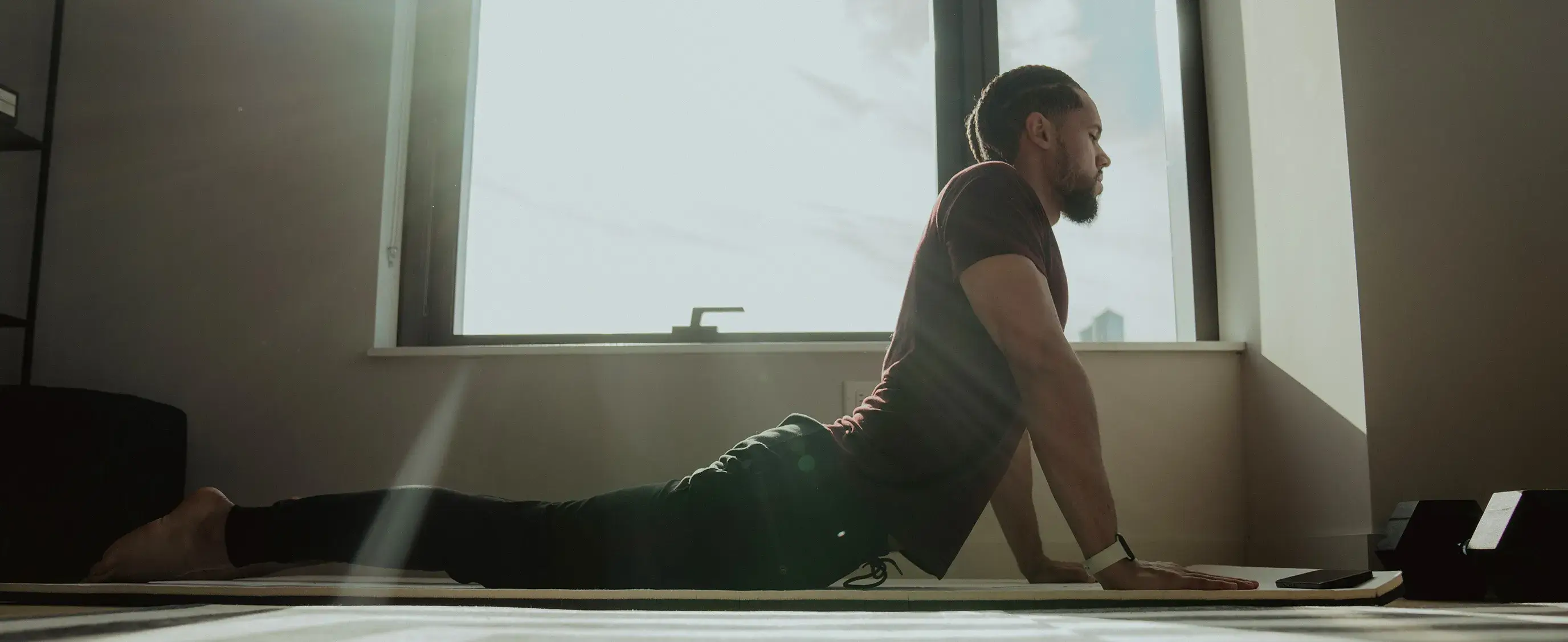Muscle tightness is uncomfortable and can make physical activities much more challenging. Stretching can help relieve tightness, but how frequently should flexibility exercises be performed for best results? This article will explore how often flexibility exercises should be performed to help you achieve your goals, like improved range of motion and better performance. An effective and sustainable stretching routine can help you achieve greater flexibility, reduce stiffness, and improve mobility.
Pliability's mobility app can help you reach your flexibility goals by creating a personalized routine to improve mobility and relieve tightness.
How Frequently Should Flexibility Exercises Be Performed for Best Results?

Bending forward to touch your toes can reveal how tight your hamstrings are. When it’s challenging to move and bend easily, it can be a sign that you need to stretch more often to improve your flexibility.
Why Flexibility is Key to an Active Lifestyle
Simply put, flexibility refers to the mobility of your muscles and joints, says Austin Martinez, CSCS, a certified stretch and conditioning specialist and VP of training and experience at StretchLab. If you’re flexible, you’ll have a good range of motion, meaning you can bend, stoop, and twist with abandon. If you aren’t flexible, you’ll likely notice that some regions of your body feel stiff to the point where it prevents you from getting down—quite literally.
When you lack flexibility, you’ll probably feel it most in your shoulders and hips. “This is because we use these areas the most during daily activities, like walking, sitting, and reaching to grab objects, so tension builds up over time,” Martinez tells Bustle. If you have pain or stiffness in these spots—or anywhere, for that matter—it likely means you need to stretch more often.
Simple Tests to Gauge Your Range of Motion
You can also do a quick at-home test to see how flexible you are, says Brandt Passalacqua, the founder, director, and lead teacher at Breathing Deeply Yoga Therapy. Start with a squat or lunge to see how your hips feel. “Being able to touch your toes or position yourself correctly for a deadlift can also help indicate if your hamstrings are flexible,” he tells Bustle. “You can then check your shoulder flexibility by lifting your arms directly over your head.” Notice any tightness? Here’s how often you should stretch to improve flexibility:
The Benefits of Flexibility
Your entire body is connected, so a lack of flexibility in one area can start to impact a seemingly unrelated area. Tight hips, for example, can lead to lower back discomfort, Martinez says, while tight shoulders can be a pain in the neck if it isn’t stretched out, tension can spread until your whole being feels like one stiff board.
Beyond Yoga Poses, Enhanced Everyday Movement
Of course, being flexible doesn’t just mean you can do all the bendiest poses in yoga class. It also helps you out in everyday life. By improving your flexibility, you’ll have a more excellent range of motion, which means you’ll reach up to high shelves, bend down to pick up your dog, and even tie your shoes without issue. Passalacqua says that flexibility also reduces your risk of injury, especially while exercising.
“Good flexibility can also improve your performance in physical activities, such as sports or fitness routines,” he tells Bustle. “Your muscles will work better and get more blood flow if you exercise your full range of motion.”
Flexibility's Role in Upright Living
Flexibility also plays a role in good posture, says Whitney Berger, CPT, a certified personal trainer and founder of WhitFitNYC. While you need flexibility in your shoulders to sit up straight, that extra mobility also helps combat all the adverse side effects of sitting, especially if you do it all day for work.
How Often Should You Stretch To Improve Flexibility?
Passalacqua recommends stretching at least two to three times weekly to increase your flexibility. “As you stretch, your connective tissues should become less restrictive and more stabilized,” he says. “If you don’t practice often enough, you may start to lose mobility again.”
Passalacqua says to hold your stretches for at least 30 seconds each for best results. “This can help improve the plasticity in your connective tissues and result in real improvement, rather than just a feeling of release,” he explains. “But don’t push so hard or hold so long that you experience pain.”
Of course, how often you stretch depends on what you’re trying to achieve. “If you want to do a split, that is something you need to work on daily,” Berger says. Two to three times a week improves your overall joint health and stretch. Berger recommends stretching for 30 minutes but notes that even five or 10 minutes is OK.
“You don't have to spend hours stretching to see a change,” Martinez adds. When it comes to flexibility, it’s more about finding what works for you so you can stick to a routine. “Make a plan, form it as a habit, and stick to it,” he says.
Patience and Consistency Are Key to Progress
You won’t be as limber as Gumby after one stretching session. According to Passalacqua, the results of your flexibility training will depend on your unique body, current mobility, and stretching routine. “If you stretch two to three times per week, you may start noticing an increase in your flexibility within the first week or two, or it may take a little longer. Be patient with yourself and if you’re worried that you are not stretching properly, consult an expert for guidance.”
Related Reading
- Why Is Flexibility Important
- Does Flexibility Increase Speed
- Can Anyone Become Flexible
- Does Stretching Make You More Flexible
- Why Is Flexibility Important for Team Sports
- Increase Back Flexibility
- How Long Does It Take to Get Flexible
- Which Activity Is a Type of Flexibility Exercise?
- Sports That Require Flexibility
- What Is the Best Strategy to Improve Flexibility in Your Legs and Back
- Mobility vs Flexibility
- Sports That Require Flexibility
The Do’s and Don’ts of Flexibility Training

Most people think stretching is the only way to enhance flexibility. Self-myofascial release to address tissue density is also effective and should be incorporated into your exercise experience.
Prepping for Movement
Beginning your warm-up using tools such as a foam roller or tennis ball to decrease trigger points or “knots” within the muscles by applying pressure to commonly tight body areas can help relieve tension and increase blood flow. In turn, this helps to enhance mobility and improve overall movement quality.
Interestingly, self-myofascial release can also be incorporated into the cool-down to offer even more flexibility-related benefits, as first focusing on tissue density will then help to address tissue length through the completion of static stretching.
Warm Up: Get the Blood Flowing Before Stretching
Research suggests that flexibility exercise is most effective when the muscles are warm. Therefore, engaging in light aerobic activity, such as jogging, jumping rope, or brisk walking—to get the blood flowing to the tissues can prove beneficial before performing static stretches.
Get Mobile: Joint Mobility is Key for Injury Prevention
When it comes to injury prevention, ensuring adequate joint mobility is imperative. The body comprises joints that favor stability—such as the knees and lumbar spine—and joints that favor mobility, including:
- Ankles
- Hips
- Thoracic spine
- Shoulders
To get more out of your movements, your workouts should include a dynamic warm-up to enhance the range of motion in these four areas.
Priming Your Body
This should include movements that mimic the five primary movement patterns: bend-and-lift movements (squatting), single-leg movements (lunging); pushing, pulling, and rotational or twisting movements. The warm-up should serve as a dress rehearsal for specific exercises within a given workout, activity, or sport and to:
- Increase core body temperature
- Address movement deficiencies
- Improve joint range of motion
- Reduce the risk of injuries in the gym and everyday life
Mix it Up: Don’t Be a One-Track Mind in Your Flexibility Training
Flexibility training, like resistance training, is joint-specific, meaning there’s not one specific exercise or stretch to improve your overall flexibility. Instead, incorporate various movements and stretching techniques into your training to target the significant muscle-tendon units of the:
- Neck
- Chest
- Shoulder girdle
- Trunk
- Lower back
- Hips
- Legs
- Ankles
Spice It Up: Explore Different Approaches to Flexibility Training
From proprioceptive neuromuscular facilitation (PNF) with a partner to static stretching in mind-body modalities like yoga, mixing up your approach to flexibility will not only offer improvement in range of motion around the joints, it will also keep this component of your workout routine exciting and ultimately more enjoyable.
Don’t Overdo It: Flexibility Training Should Never Be Painful
As is the case with any aspect of fitness, you want to feel challenged regarding flexibility training. Nevertheless, there’s a big difference between slight discomfort and extreme pain. When performing static stretching, make it a point to stretch only to the point of feeling mild tightness or slight discomfort to ensure the most significant level of safety and effectiveness.
Make It a Priority: Consistency is Key for Flexibility Training
Studies have shown that while range of motion around a joint is improved immediately following flexibility exercises, chronic improvements are seen after three to four weeks of regularly stretching at least two to three times per week. For the most significant benefit, perform your flexibility training after your resistance-training workouts and stay committed to your approach to stretching regularly.
Don’t Skimp on Static Stretching: Flexibility Training Takes Time
For best results, aim to hold each static stretch for 15 to 30 seconds and repeat each one two to four times, completing 60 seconds per joint.
Related Reading
- Why Is It Important for Athletes to Be Flexible
- Flexibility Sports Examples
- How Many Days Per Week Can You Perform Flexibility Exercises?
- How to Become Flexible if You Are Very Stiff
- Flexibility Exercises for Kids
- Flexibility Exercises at Home
- How Can Flexibility Training Reduce the Risk of Back Pain?
- Flexibility Exercises for Beginners
- Benefits of Flexibility
- Flexibility Workout Plan
- Types of Flexibility Exercises
- Back Stretches for Flexibility
- Strength and Flexibility Training
- Exercises for Lower Back Pain
- How to Stretch Quads
- Morning Stretch
- Best Quad Stretches
- At What Average Age Does Flexibility Start to Diminish for Most People?
- IT Band Stretches
- IT Band Stretch
- IT Band Exercises
- Inner Thigh Stretches
- Cool Down Stretches
- Standing Quad Stretch
Improve Your Flexibility with Our Mobility App Today | Get 7 Days for Free on Any Platform
When it comes to flexibility training, consistency matters. You won't be able to touch your toes overnight. Improving your flexibility takes time; stretching regularly is the best way. The more frequently you stretch, the quicker you will see results. For most people, that's at least two to three times weekly.
Nevertheless, these routines can be short, taking five to 30 minutes. The key to success is to find a flexible training routine that you enjoy and can stick with in the long term.
Optimize Your Movement
Pliability offers a fresh take on yoga tailored for performance-oriented individuals and athletes. Our app features a vast library of high-quality videos designed to improve flexibility, aid recovery, reduce pain, and enhance range of motion.
Personalized Mobility
Pliability provides daily-updated custom mobility programs for those interested in optimizing their health and fitness. It also includes a unique body-scanning feature to pinpoint mobility issues. If you're feeling limited by pain or your ability to move, Pliability aims to complement your fitness routine and help you move better.
Sign up today for 7 days free on iPhone, iPad, Android, or our website to improve flexibility, aid recovery, reduce pain, and enhance range of motion with our mobility app.
Related Reading
- Leg Flexibility Exercises
- Muscular Flexibility Exercises
- Pliability vs Flexibility
- Flexibility Workout
- Flexibility Routine
- Best Stretches for Flexibility
- Best Flexibility Apps
- StretchIt vs Pliability
- Bend vs Stretchit
- Bend App Alternative
- Band Stretches
- Side Stretches
- Stretches for Sore Legs
